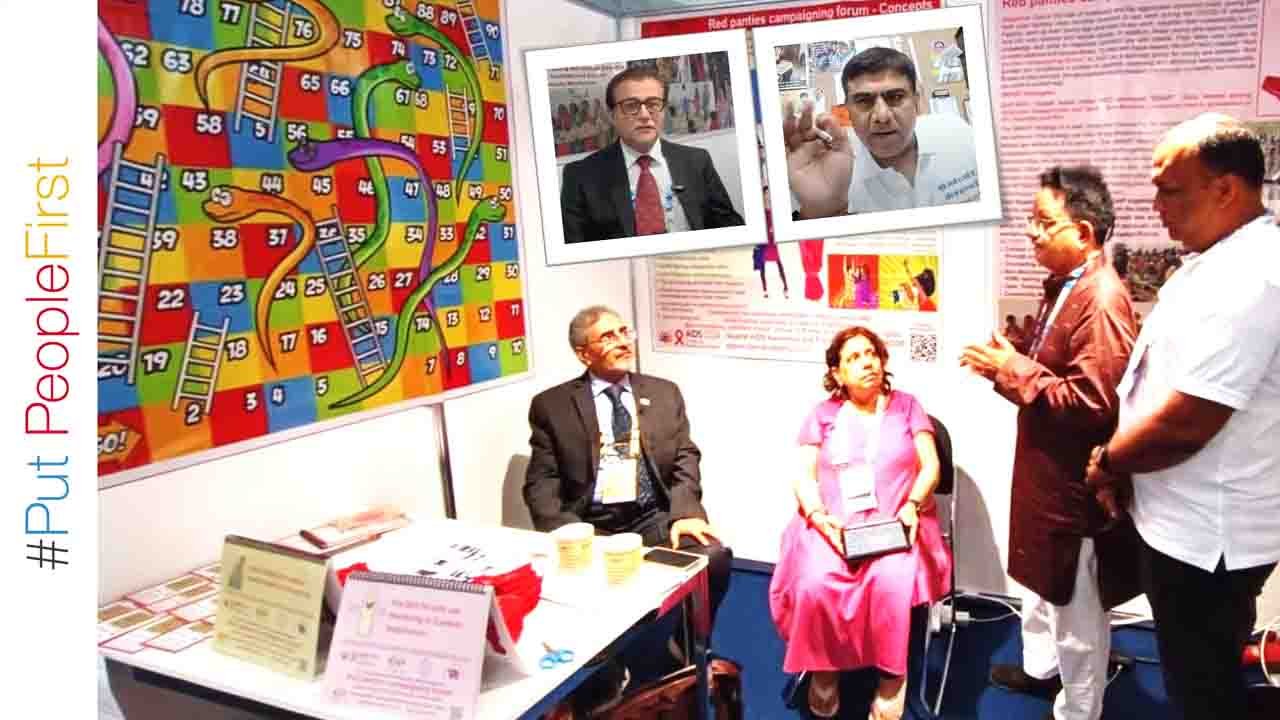Health
It is time to get back to basics if we are to end TB
This year’s World TB Day theme is #WeCanEndTB. However, many nations in the global north were successful in eliminating TB as a public health threat many decades back.
“We can end TB in India and many other high burden nations. It is achievable – we have achieved this milestone in countries of the global north in the past. I come from a country (Australia) which was successful in getting rid of TB in the 1970s. Few other countries in the global north successfully did that in the 1950s and 1960s. But then we moved our foot away from the accelerator, and stopped doing the things that helped us end TB,” said Professor (Dr) Guy Marks, President and interim Executive Director of International Union Against Tuberculosis and Lung Disease (The Union), and noted lung health researcher from University of New South Wales, Sydney, Australia.
Active case finding and breaking the chain of infection transmission
Decades back, countries in the global north did active case finding – so that healthcare services could reach everyone with TB – and made efforts to break the chain of transmission of TB infection by protecting people from getting infected from those who had the disease, said Dr Marks.
But in the rest of the world, especially in nations of the global south, we did not do this despite the evidence that the approach helped richer nations get rid of TB as a public health threat back then. “This represents a great betrayal of billions of people in the global south,” said Dr Guy Marks.
He was speaking as the Guest of Honour at the 77th National Conference of Tuberculosis and Chest Diseases (NATCON) in Agra, India. Co-hosted by TB Association of India, Uttar Pradesh TB Association of India, International Union Against Tuberculosis and Lung Disease (The Union), and partners, this conference brought together over 800 medical experts and researchers from the field of TB and other chest diseases in India, and worldwide.
“Healthcare workers from varied disciplines and medical specialities and at all levels – from frontline workers in the communities to those in clinics and hospitals or medical colleges, or those shaping national and international guidelines and contributing to TB research – all of them are collectively helping India to advance towards fulfilling the dream of our Prime Minister to eliminate TB by 2025. India has brought the global SDGs target to end TB by 2030, five years earlier to 2025. Together we can end TB,” said Dr Vijay Kumar Arora, Chairperson of Tuberculosis Association of India as well as of Southeast Asia region of The Union.
Are we on track?
The WHO Global TB Report 2022 shows that India had an estimated 3 million new TB cases and over half a million TB deaths. The number of new estimated drug-resistant TB cases has been hovering around 150,000 every year, which includes those who got infected with drug-resistant bacteria as well as those who have been through TB treatment earlier.
Every new case of active TB disease comes from the vast pool of people with latent TB infection. We need to do more to break the chain of transmission of TB as well as make more efforts to prevent emergence of any further drug-resistant TB.
The number of new TB patients declined by 18% between 2015 and 2021 in India but this pace of decline is clearly not enough to end TB by 2025. “Number of new TB cases has to decline much more steeply,” said Dr Vishwa Mohan Katoch, a stalwart TB researcher, who is the former Director General of Indian Council of Medical Research and former Secretary of Department of Health Research, Ministry of Health and Family Welfare, Government of India. Presently, he is also the President of TB Association of India.
“In the past we have been able to achieve a 2 to 5% annual decline of TB cases but if we want to end TB we have to ensure that the number of new TB cases declines at an yearly rate of over 10%,” said Dr Katoch.
Thinking out of the box approach is key. For example, contacts of a person who has active TB disease may not always be those who are in the household. Infection transmission occurs not only in homes but also at workplaces or even healthcare facilities.
Dr Katoch recollected that one of the two major outbreaks of multidrug-resistant TB (MDR-TB) in the USA in early 1990s was traced to the doctor who was performing bronchoscopy with inadequate sterilization, which resulted in some of his patients getting infected with MDR-TB. This led to the game-changing step to ensure proper sterilization of bronchoscopes which yielded enormous public health gains. But infection control in healthcare settings is inadequately addressed as of now.
Last mile is often the hardest
Dr Katoch called upon TB advocates to look beyond the obvious, and ensure that those who are likely to be missed out are first to be reached by the healthcare services. For instance, tribal populations often have double or more incidence of TB.
We cannot find a way out of the TB pandemic by the test and treat ‘carpet bombing’ strategy alone. We have to break the chain of infection transmission and ensure that no further drug resistance emerges, said Dr Katoch.
Building lung health competencies of medical doctors
Over 300 medical experts of tuberculosis and chest diseases were trained in eight workshops held in SN Medical College and elsewhere, before the opening of India’s largest conference of tuberculosis and chest diseases in Agra, India, said Professor (Dr) Surya Kant, Scientific Chair of the 77th National Conference of Tuberculosis and Chest Diseases (NATCON).
Prof Surya Kant is the North Zone Chairman of National Task Force for TB Elimination, Head of Department of Respiratory Medicine at India’s prestigious King George’s Medical University (KGMU) in Lucknow, and is among the few respiratory medicine experts who have been national Presidents of all 3 professional associations, namely, National College of Chest Physicians of India (NCCP), Indian Chest Society, and Indian College of Asthma, Allergy and Applied Immunology.
‘Six pack challenge’
Prof Surya Kant said that apart from TB, there are six other major challenges that confront public health in Uttar Pradesh and the country. Air pollution, all forms of tobacco use, increasing modernization, urbanization and industrialization, bad diet and unhealthy lifestyles, are propelling an amalgam of epidemics in the country that are entirely preventable in terms of disease burden and untimely deaths. These are also causing an alarming rise in allergic disorders, asthma, chronic objective pulmonary disease (COPD), interstitial lung disease, lung cancer, bronchial cases, and so many other lung diseases.
If we are to end TB by 2025 in India and by 2030 globally, much stronger actions are needed with renewed sense of urgency and purpose.
Shobha Shukla, Bobby Ramakant
CNS (Citizen News Service)





